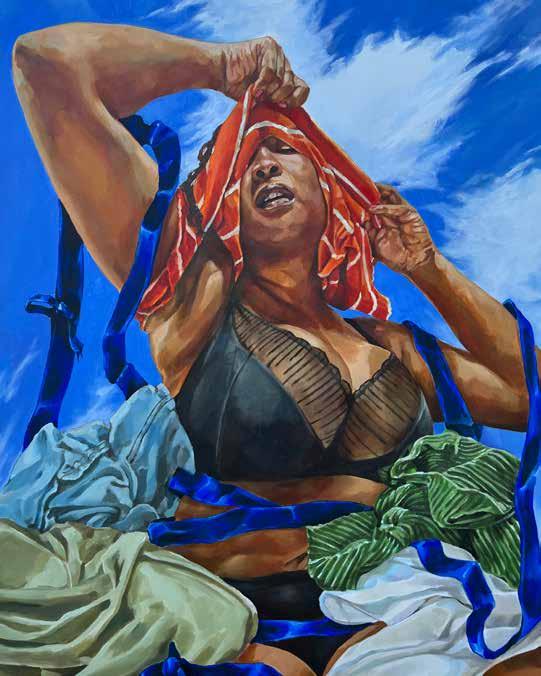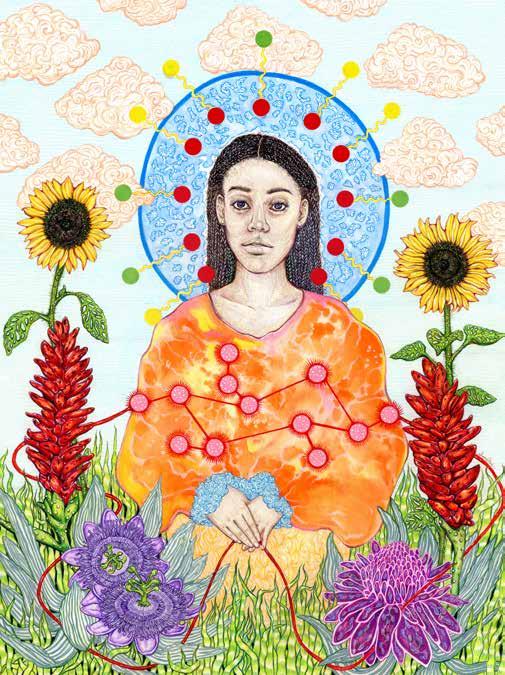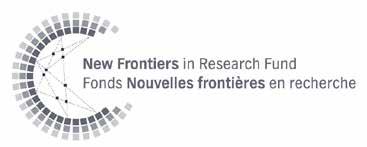ABOUT THE RESEARCH
Sugar Made Us Free?
Diabetes and the Afterlife of Slavery in Barbados: Art, Archive and the Gendered Dimensions of Risk
… sugar is part of our culture it’s in our history, it’s our identity we should be proud of our industry cause sugar made us free.
- Dr Stetson Wiltshire (Red Plastic Bag)
The lyrics of this 1982 Barbadian calypso lament the decline of the sugar industry, gesture towards the centrality of sugar in shaping modern diets and global economies, and call attention to the historical and affective dimensions of sugar. This narration of history erases Barbados’ infamous position as the world’s first Black slave society in the 17th-19th centuries. Moreover, it obscures the country’s historical and current food and nutrition insecurity and contemporary notoriety as the ‘amputation capital of the world’ for its high incidence of diabetes-related amputations.
Caribbean historians have linked this growing epidemic of diabetes to the prominence of sugar within citizens’ diets and to its connection with the emotional, physical and nutritional brutality of slavery. This history cannot be separated from the global rise of industrial agriculture, the liberalisation of food and prominence of ultra-processed foods in modern diets, and “the role of multinational food corporations in shaping metabolic states” (Hatch 2016, 105). Yet, the dehumanizing work of the race and gender categories of slavery and their impact on the uneven distribution of diabetes among Black Barbadian women has yet to be confronted within public health research.
To comprehensively intervene upon the disease’s complex distribution and social and behavioural risk factors, a multifaceted public health approach toward diabetes is needed. We argue this must include accounting for the country’s history of sugar cultivation and connected colonial legacies
surrounding gendered care work, unpaid labor, poverty and more – legacies whose gravity have been underscored in the wake of the COVID-19 pandemic.
One in five Barbadian adults has a diagnosis of type 2 diabetes. For those over age sixty-five, it is almost 1 in 2. Caribbean women experience 1.5 times the risk of type 2 diabetes than men in divergence from the typical distribution of diabetes by sex. This research project centres the stories, theories and experiences of Black Barbadian women in order to produce socio-historically informed (e.g., gender-based) public health policy recommendations on diabetes management and care and foster community engagement and knowledge production on the gendered dimensions of diabetes in Barbados.
This multi-methods qualitative research study includes:
• 58 in-depth, semi-structured interviews with working class and middle-class Black Barbadian women living with type 2 diabetes, Black women caring for patients with diabetes, and healthcare providers involved in providing diabetes-related care in Barbados ranging from primary care physicians to specialist surgeons, nurses and auxiliary professionals.
• The collection of a series of journal entries submitted by Black women living with diabetes over the course of 4 weeks in relation to prompts provided by the research team.
• Archival research of digital newspaper archives on type 2 diabetes, its risk factors and associated keywords, and public health campaigns and advertising in Barbados
• Analysis of sugar metaphors and references to diabetes in Caribbean folk and popular music.
• Commissioned artwork from Llanor Alleyne, Simone Asia and Anna Gibson, three incredibly talented Black Barbadian women artists whose artistic representations depict women’s embodied experiences navigating type 2 diabetes
This research is funded by the New Frontiers in Research Fund of the Government of Canada.
Dr. Tonya Haynes
is Head and lecturer at the Institute for Gender and Development Studies: Nita Barrow Unit, University of the West Indies, Cave Hill Campus.
Animated by the liberatory potential of Caribbean feminisms, Tonya’s research on Caribbean feminisms and Caribbean feminist thought appears in Frontiers: A Journal of Women’s Studies, Small Axe: A Caribbean Journal of Criticism, Journal of Eastern Caribbean Studies, sx archipelagos, and The Scholar and Feminist Online. Her work on gendered violence appears in Global Public Health and Social and Economic Studies. She is co-editor (with Dr. Andrea Baldwin) of Global Black Feminisms: Cross Border Collaboration Through An Ethic of Care (Routledge 2023).
Dr. Tonya Haynes has led many regional public scholarship initiatives. These include the LIVITY Project: Supporting Eastern Caribbean CSOs for Social Change, 14th and 15th cycles of the Caribbean Institute in Gender and Development: An Intensive Training programme, and a collaboration with the Caribbean Climate Change Community Centre to train 500 staff and partners of the Barbados Water Authority on Gender, Water and Climate Change.
Together with Dr. Nicole Charles, she is currently exploring Black Barbadian women’s experiences of type II diabetes through an interdisciplinary project entitled “Diabetes and the Afterlife of Slavery in Barbados: Art, Archive and the Gendered Dimensions of Risk.” She is also Principal Investigator of the research project Narratives of Gender and Ageing from Barbados.
Dr. Nicole Charles
is an Associate Professor of Women, Gender and Sexuality Studies in the Department of Historical Studies at the University of Toronto Mississauga, with a graduate appointment in the Women and Gender Studies Institute at the University of Toronto. Her scholarship takes an interdisciplinary approach to questions of care, affect, gendered and racialized risk, technoscience, and coloniality in the Black Atlantic.
Her book, Suspicion: Vaccines, Hesitancy and the Affective Politics of Protection in Barbados was published by Duke University Press in 2022 and was the recipient of the 2022 Duke University Press’ Scholars of Color First Book Award, the co-recipient of the 2022 Gordon K. and Sybil Lewis Award and a Finalist for the 2023 Ludwik Fleck Prize.
Her writing can be found in the journals Social Text, Feminist Studies, Feminist Formations, Feminist Media Studies, and Citizenship Studies.
Together with Dr. Tonya Haynes at the Institute for Gender and Development Studies: Nita Barrow Unit, University of the West Indies, Dr. Charles is currently exploring the cultural politics of sugar, race, and diabetes in Barbados through an interdisciplinary project entitled “Diabetes and the Afterlife of Slavery in Barbados: Art, Archive and the Gendered Dimensions of Risk.”
ANNA GIBSON
Anna Gibson is a Barbadian contemporary artist who explores multiple mediums, crafting images of body manipulation through realism and expressionism. She has been practicing for over seven years and attended the Barbados Community College, completing her Bachelor of Fine Arts (2017).
She has participated in some local (Barbados) group exhibitions at The Punch Creative Arena, UN Women ‘1in3 Art Exhibition’ at the UN House Barbados, ‘Young Artist’ at The Barbados Arts Council Art Gallery, Reimagined: Unspoken Bodies and Spaces at The Frame & Art Co. and more. She also has experience painting murals with artist collective A3 Design, most notably for the Hilton Barbados, the Barbados Grantley Adams International Airport and the Barbados Post Office.
ARTIST’S STATEMENT
Anna’s artwork is rooted in exploring women’s bodies and their relationship with our cultural, racialised preferences and social environment. Focusing on insecurities from both personal and external experiences as well as popular culture, her artwork explores and exposes the vulnerabilities women have about their differences from each other and how they seek to mentally and physically mask or morph their bodies in an obsessive process of evolving, using various “beautification” methods to achieve acceptance socially and internally. She is questioning the constant state of re-evaluation of the ‘self’, creating landscapes driven by internalised experiences, using various nostalgic elements as a form of escape and reprieve from a demanding reality, for these altered figures.
annabananagibson@gmail.com
Head of the Table (2025)
Acrylic on canvas
Diabetes entails being precise about meal intake, even so, some stories reflected the women compromising their meals for the family’s sake. It was also alarming that in some accounts, families were unaware that the individual even had diabetes due to societal scorn and insecurity sharing. Driven by the notion of hierarchy within the home, women are often assumed to be the primary caregivers. I aim to challenge this viewpoint by placing the woman at the head of the dinner table, a reference to the tradition of the man of the house sitting in that position. While the conventional image of a domestic woman cooks and cleans, who truly holds more power?
Living with diabetes involves constant adjustments and navigation to find the right balance of diet, exercise and medication. This made me think of the homemade kites, a form of self-expression and freedom and is an object that brings communities together.
In this painting, the woman lethargic, sits in the dining chair with her foot up and wearing home/ comfortable clothing. Draped all over her are rags and ribbons pieced together to make a kite tail, which snakes around her neck, torso, tummy, legs and fingers, leading to the homemade kite resting on the plate and cutlery on the table in front of her. Behind her is the bright blue sky, her domain to navigate.
30” x 36”
Material: Acrylic on canvas
The Unwanted Guest’ explores the anxiety of diabetes and adjusting to the uncomfortable symptoms. In the diaries, one described the shifts in her body and the various dermatological issues she experienced, and this line - “feeling like an unwanted guest in my own home” stayed with me.
This painting depicts the turmoil of figuring out what works on the body, using the trial and error of trying on clothes when there is a significant change in body size and comfortability. The face exhibits frustration as they yank the shirt over their head, surrounded by clothing tried and failed. I want to capture the feeling of trying to escape the skin. As she struggles, draped around her are the kite strings, a tangled mirror of her state. She becomes the unwanted guest, along her journey of navigating through this condition.
‘‘The Unwanted Guest’ 2025
Size: 30” x 36”
LLANOR ALLEYNE
Llanor Alleyne is a multidisciplinary artist whose work explores themes of inversion, fragmentation, and reconstruction through collage, illustration, and abstract painting. Rooted in an intuitive process of tearing, cutting, and layering, her compositions interrogate the intersections of femininity, nature, and personal history. Influenced by her lived experiences in Barbados, the UK, and the US, Llanor’s practice bridges cultural narratives, environmental concerns, and the emotional resonance of form and texture.
With a professional background as a content strategist and director, Llanor brings a distinct editorial sensibility to her work, treating each composition as a layered narrative. Her approach to image-making is informed by a career spent distilling complex ideas into compelling visual and written storytelling. This fusion of analytical and creative perspectives allows her to craft pieces that are both conceptually rigorous and deeply emotive. Llanor has exhibited her work in solo and group shows across the US and Barbados, including at New York’s Leslie
Lohman Museum where she completed the Colin Robinson Residency in 2024. Her practice continues to evolve through material experimentation, digital media integration, and an ongoing exploration of the boundaries between abstraction and figuration.
ARTIST’S STATEMENT
Llanor Alleyne’s collages and illustrations explore the tension between metaphorical and physical inversion, using tearing, cutting, and layering to shape abstract, figurative, and floral forms. Through this process, she interrogates the intricate, empathetic connections between femininity and nature, while simultaneously evoking the emotional disruptions that pulse beneath the surface. Inspired by both her immediate environment and imagined landscapes, Llanor constructs abstract paintings and drawings on mylar and paper, which serve as the foundation for her collages. These ephemeral “first works” act as a visual language—dictating form, structure, and movement within her compositions. Their lines, colors, and curves reemerge across multiple works, threading shared DNA between fragmented figures and layered silhouettes. In the final evolution of her process, lone female forms take shape, their presence imbued with both vulnerability and quiet defiance.
30” x 44”
Mixed-media collage
“Tea and Empathy” visually explores the impact of type 2 diabetes on Black women in Barbados, particularly those recently diagnosed. Created for In the Flesh: Critical Reflections on Black Women’s Experiences of Food, Embodiment, and Type 2 Diabetes, the piece reflects both the cultural and personal dimensions of the disease. Through the use of vibrant botanicals, historical references, and figurative symbolism, the work addresses traditional healing, community support, and the emotional toll of managing diabetes.
Materials and Techniques
This collage is crafted using a combination of hand-cut paper, acrylic paint, and digital printing techniques. The layering of different textures and materials creates a dynamic, almost three-dimensional effect that enhances the visual storytelling. The hand-cut paper elements allow for intricate detailing, particularly in the foliage and floral components, lending a sense of organic movement to the piece. The bold red background and the black figure are created using high-quality drawing paper, which enhances the richness of the colors and contributes to the piece’s textural depth. The integration of digital printing introduces precise patterns and textures, enriching the overall composition. The combination of these techniques creates a tactile and visually immersive experience, emphasizing the interconnected themes of healing, history, and self-care.
Tea and Empathy (2025)
Symbolism and Cultural Context
At the heart of the composition is a central black silhouette immersed in an abundant array of medicinal plants and flowers. The presence of plants significant to Barbadian traditional medicine reinforces themes of healing and resilience:
Cerasee Leaves (left side): A widely used plant in Caribbean herbal medicine, known for its role in blood sugar regulation and overall health maintenance.
Spanish Needle (right side): Recognized for its medicinal benefits, including anti-inflammatory properties and blood sugar management, representing the incorporation of natural remedies into daily life.
Sugarcane Inflorescence (top, pink arrow-like plant): A poignant nod to Barbados’s sugar industry and its lasting effects on dietary habits and public health. As a crop that fueled both the colonial economy and dietary shifts toward high sugar consumption, sugar cane serves as a historical and economic marker of diabetes prevalence.
Passion Flowers (overflowing from the tea cup): Symbolizing the calming of anxiety, these flowers acknowledge the mental and emotional strain that accompanies chronic illness.
The Figure: Self-Hugging and Community Support
The central figure engages in an act of self-hugging while another hand gently rests on its shoulder, embodying two key elements:
Self-Compassion: The reaching hand serves as a gesture of selfsoothing, reflecting the necessity of self-care and emotional support in the journey of managing diabetes.
Familial and Community Support: The hand on the shoulder symbolizes the presence of loved ones who provide care,
encouragement, and shared wisdom in navigating the condition.
Color and Composition
The bold red background intensifies the emotional depth of the piece, signifying vitality and urgency—an allusion to the high stakes of diabetes management. Against this backdrop, the lush greenery and vibrant floral elements contrast, offering a sense of life, healing, and perseverance.
The tea cup at the bottom serves as an anchor, both compositionally and thematically. As a vessel of healing, it signifies the practice of herbal tea consumption in Barbadian culture, reinforcing the theme of traditional medicinal knowledge passed through generations.
Themes and Interpretation
Ancestral Knowledge and Healing: The use of local plants ties the piece to a history of natural remedies and self-sustained healing practices among Black Caribbean communities.
The Burden of History: The inclusion of sugar cane subtly critiques the historical legacies of colonialism and its ongoing impact on health disparities.
Resilience and Care: The combination of self-embrace and external support underscores the importance of both personal and communal strategies in dealing with chronic illness.
Final Reflections
“Tea and Empathy” presents a multi-layered narrative that interweaves cultural, historical, and personal elements into a single composition. It is a poignant visual meditation on the lived realities of Black Barbadian women facing type 2 diabetes, addressing both the struggles and the support systems that sustain them.
SIMONE ASIA
Simone Asia is a Barbadian-born illustrator recognized for her intricate penmanship and attention to detail. Her artistic influences span both local and international figures, including Ewan Atkinson, Christopher Cozier, installation artist Tomoko Shioyasu, and illustrator James Jean.
Originally specializing in pen and ink, Simone has recently embraced mixed media, expanding her artistic exploration. Her work is deeply rooted in portraiture and journaling, often delving into themes of the human condition, botany, science, and metaphysics.
She holds an Associate Degree in Visual Arts and a Bachelor of Fine Arts (BFA, Hons) in Studio Arts. Throughout her career, Simone has participated in numerous local and regional residencies that have significantly shaped her artistic direction. These include Alice Yard (Trinidad and Tobago), Ateliers ’89 (Aruba), Projects and Space, Fresh Milk, and Punch Creative Arena (Barbados).
In 2016, she was awarded the Central Bank of Barbados Governor’s Award and later that year held her first solo exhibition, Grey Matters, at Punch Creative Arena, Barbados Community College. Her work has since been featured in various exhibitions, magazines, and books internationally. Beyond her personal practice, Simone works with Punch Creative Arena, where she helps facilitate exhibitions and events. She is also a part-time tutor in the Associate’s Degree Programme at Barbados Community College, teaching Academic Drawing, 2D Visual Language, and Graphic Design: Illustration.
ARTIST’S STATEMENT
This body of work reflects the internal struggles women face while living with Type 2 diabetes. The burden of selfsurveillance and effect on the human condition become overwhelming upon diagnosis. In some cases, the disease is visibly apparent, while in others, it remains nearly invisible—but awareness is crucial.
This piece explores a duality of diabetes—the emotional uplift of steady, positive readings and symptom improvement, contrasted with the public perception of women who may not outwardly appear unwell.
I chose to revere the figure, similar to a saint in a stained glass window, highlighting the resilience and perseverance of these women. The chosen colors are inviting and visually pleasing, much like the allure of high-sugar foods. Yet, managing diabetes is not a solo act; support and awareness from family, friends, and society is essential.
From a distance, someone may seem fine, but closer examination reveals a deeper reality. This is represented in subtle elements within the drawing— bruising, scorched textures, and visceral and microscopic details in the clothing, plants, and halo— serve as hints of the disease’s impact.
Preservation (2025)
30” x 22”
Mixed Media
This piece embodies the struggles and burdens of living with diabetes, placing emphasis on its mental, emotional, and physiological toll on women. Many feel drained, weighed down, and emotionally exhausted.
There is the need to focus on the connection to Barbados’ historical relationship with sugar. Once the foundation of our country’s economy—first through slavery, then post-abolition—the legacy of sugar has left a stain on our society, both economically and physically. Although it may not be the most prevalent source of income in recent times, the lingering, looming impact still exists.
Here, the figure is trapped—stuck in molasses, crystallizing, held hostage by twisting, malignant sugarcane. Helpless and poisoned, it is an inextricable situation.
Overconsumption of sugar has been referred to as poison in the body, and the color choices reflect this idea: bluing of the skin, a violet sky, sugarcane rendered both sweet and bitter.
Encumbered (2025)
30” x 22”
Mixed Media
Acknowledgements
This research project has been a long time in the making. We have weathered personal and professional transitions as well as the COVID-19 pandemic through its conceptualisation and completion.
We acknowledge the support of the Government of Canada’s New Frontiers in Research Fund (NFRF), [NFRFE-2020-00773] and the institutional support of the University of Toronto, Mississauga and the University of the West Indies, Cave Hill Campus in facilitating this work.
We recognise the ingenuity and vibrance of the visual artists movement in the Caribbean and the central role that Black Caribbean women play in the contemporary art community. Working with Llanor Alleyne, Simone Asia and Anna Gibson reflects our deep respect for multiple ways of knowledge production and dissemination. Llanor, Simone, Anna thank you for entering into this dialogue with us as researchers, and with the women’s stories and theories.
Mental Health Clinician and Gender and Development specialist, Ms Patrice Daniel, offered professional and meticulous research assistance throughout the data collection process and multiple community engagement events which sought to open dialogue around our analysis and findings. Patrice, we thank you, love working with you and look forward to future collaborations!
Dr. Diane Brathwaite, Clinical Director of the Barbados Diabetes Foundation, enthusiastically embraced us and generously invited us to deliver the Oscar Jordan Memorial Lecture in 2024. It was the first time the lecture was delivered by researchers outside of the medical field. Thank you for taking a risk on us, for the collegiality, camaraderie and exuberant energy.
Of course, none of this would have been possible without the women who generously opened their lives to us with the expectation that their participation in the research would transform diabetes care in Barbados and improve health outcomes for everyone. We thank the caregivers and medical professionals and the women living with Type 2 diabetes who took the time to be interviewed, sent follow up voice notes and messages, and shared their experiences and perspectives in both public fora and confidential interviews.
We extend sincere gratitude to our families, friends and colleagues whose love, care and support made it possible to do this work.
PRODUCED FEBRUARY 2025
designed it!
daBudzman
















